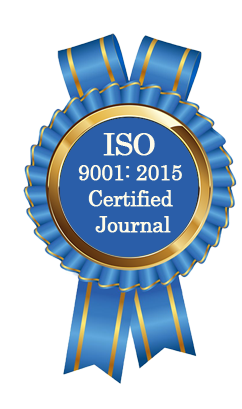| All | Since 2020 | |
| Citation | 105 | 60 |
| h-index | 4 | 4 |
| i10-index | 3 | 2 |
WJAHR Citation 
Login
News & Updation
Best Article Awards
World Journal of Advance Healthcare Research (WJAHR) is giving Best Article Award in every Issue for Best Article and Issue Certificate of Appreciation to the Authors to promote research activity of scholar.
Best Article of current issue
Download Article : Click here
Indexing
Abstract
THE EARLY FUNCTIONAL OUTCOMES OF INTRAMEDULLARY NAILING IN MANAGEMENT OF CLOSED UNSTABLE SEGMENTAL AND COMMINUTED DIAPHYSEAL TIBIAL SHAFT FRACTURE IN PATIENTS MORE THAN 20 YEARS OLD
Dr. Rabah Abdulla AL- Ebadi F.I.C.M.S (Ortho)*, Dr. Anas Faris Saadallah Al Takai M.B.Ch.B and Dr. Ahmed Sedeeq Majeed C.A.B.M.S.
ABSTRACT
Background: two or more distinctive fracture lines separating an interposed cortical segment excluding butterfly fragmentation define segmental tibia fractures. They are often resulted from high-energy and sometimes by low-energy traumas as twisting. These fractures treated by different modalities reamed intramedullary nail has get acceptance but challenging procedure. Aim of the study: To evaluate the early functional outcome of intramedullary tibial nailing in the treatment of closed unstable segmental and comminuted diaphyseal tibial shaft fracture in patients more than 20 years old regarding post-operative pain, mobilization, infection rate and union rate. Patients and Methods: This study is a case series interventional prospective study which done in Mosul Teaching Hospital; it started from the November 2021 to February 2023 in Mosul city. It included 40 patients more than 20 years old with closed unstable segmental and comminuted diaphyseal tibial shaft fracture which treated by reamed Intramedullary Nail. The patient’s conditions assessed clinically as, well as, radiologically for fracture union and complications rate evaluated via Johner and Wruhs criteria. Results: Of the 40 patients, 34(85.0%) were male and 6(15.0%) were female and mean age was 32.65 years. Segmented type of fracture was found in 22(55.0%) of the patients in comparison to comminuted type which found in 18(45.0%) patients. The mechanisms of injury were distributed as RTA in 22(55.0%), FFH in 15(37.5%), and sport in three (7.5%). The mean time for the operation was 109.05 min, 30.0% were ?90 min. and 70.0% were >90 min. The mean duration period of fracture union was 22.91 weeks; 60.0% were ?20 weeks while 40.0%>20 week. Only four (10%) patients developed infection postoperatively; one (2.5%) patient had superficial infection at entry site and three (7.5%) patients had deep infection. Knee joint pain found in 11(27.5%) of patients at 3 months while at the 6 months only 5(12.5%) still had the pain. Delayed union found in only one patient representing 2.5% of the study sample. Postoperatively excellent activity found in 16(40.0%), good activity found in 13(32.5%) of the study sample. Conclusion: The reamed intramedullary nailing after proper resuscitation and stabilization method can result in excellent alignment as; well as, union with minimal morbidity and low infection rate.
[Full Text Article] [Download Certificate]
